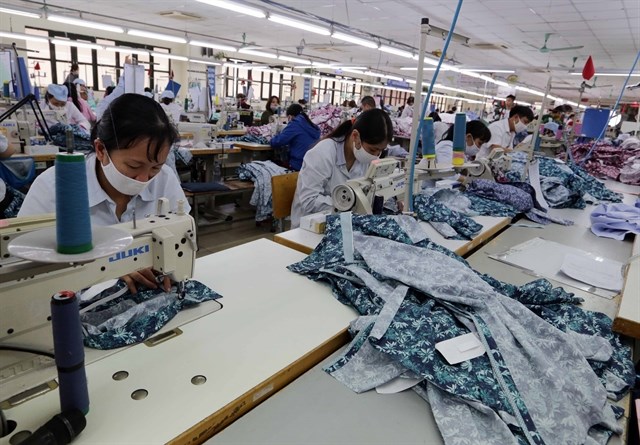 |
|
Workers atGarment 10 Joint Stock Company, a member of the Vietnam National Textile and Garment Group |
UPCoM began operationon June 24, 2009 after the Government and market regulatorsrealised the free-trading stock market had been highly risky forinvestors.
The launch of UPCoM aimed to tighten the free market and expand the size ofthe Government-controlled market to gather unlisted companies and maketheir stocks more transparent, secure and safer for investors.
Since then, manypolicies have been issued to improve the market's operation.
For example, Decree60/2015/NĐ-CP eyes better protection of investors’ benefits by requiring publiccompanies to trade shares on UPCoM, while Circular 115/2016/TT-BTCrequires State-owned enterprises to both sell State capital and tradetheir shares on UPCoM.
The improvement ofthe legal framework has been a boost to the market's performance. In thefirst six years of operation, there were only 169 companies on UPCoM with averagedaily trading value of 15 billion VND (544,300 USD).
In the last fouryears, the number of UPCoM-traded firms has increased five-fold to 833 andaverage trading value has increased 18 times to 250 billion VND.
Market capitalisationalso rocketed to 945.8 trillion VND in the same period. Foreign trading rose to16.9 trillion VND in 2018 from 157 billion VND six years before.
According to a Stock Exchange of Thailand official, the development of UPCoM was a lesson for manyregional markets.
UPCoM helped public companies test their stocks before moving to the mainlisted markets (the Ho Chi Minh and Hanoi stock exchanges) and was a placefor SOEs to offload State capital in the most efficient way, he said.
However, UPCoM hasencountered some incidents that have raised public concern about themarket’s transparency and ability to protect investors.
The worst caseinvolved the Central Mining Joint Stock Company, which used to tradeshares on UPCoM under code MTM.
The former leaders ofthe company falsified its trading portfolio and earned dozens of billions of VND by selling company shares to investors.
That case forced themarket regulator to release a list of good-quality stocks and those thatwere at risk to protect investors.
According to NguyenThanh Long, chairman of the management board at the Hanoi Stock Exchange, UPCoM requirements on companies’ stock trading were not that strict, so about half of UPCoM-traded firms had low levels of transparency.
There were still many small companies recording poor business results and lacking transparency interms of information disclosure, he told tinnhanhchungkhoan.vn.
The northern marketregulator, besides drawing up a warning list on low-quality stocks, hasimplemented a scoring mechanism to highlight companies with high qualityof information disclosure and transparency, he added.
The Hanoi StockExchange plans to ask the State Securities Commission to allowinvestors and securities companies to do marginal trading on good-quality UPCoM-traded firms to increase the market’s liquidity and prove the market's transparencyto investors.-VNS/VNA

Will the stock market upgrade benefit large cap stocks?
If Vietnam’s proportion in MSCI market increases by 3 percent, the stock market can expect to receive VND1.5 trillion more worth of capital, analysts say.

Over $1.2 billion to flow to VN stock market after upgrading to secondary emerging market
Over $1.2 billion to flow to VN stock market after upgrading to secondary emerging market
 The Unlisted Public Company Market (UPCoM) has grown over the last 10 years and become more transparent, attracting increased interest from investors.
The Unlisted Public Company Market (UPCoM) has grown over the last 10 years and become more transparent, attracting increased interest from investors.